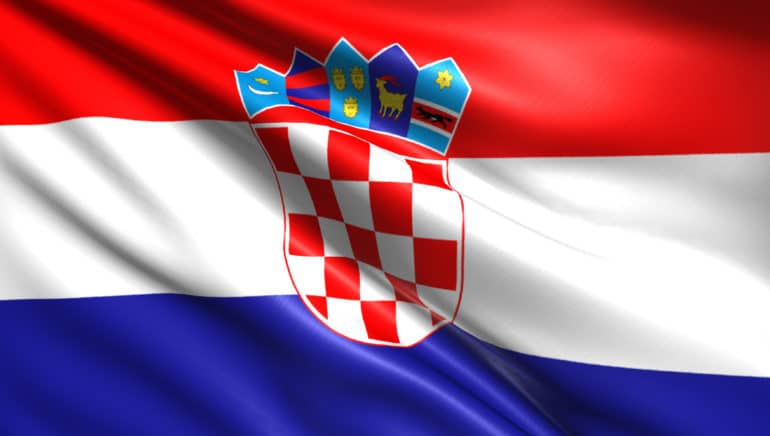Ladies and gentlemen, we are officially on a roll! Croatia has been finally awarded the much awaited investment grade rating, coincidentally (or not) by the same rating agency that first revoked it seven years ago. Admittedly, the nation’s reaction to it was pretty bland (quite unlike the one after getting in the finals) (1) with an in-house estimate of not a single beer per capita drunk on that account. Not surprising, given that the unbearable lightness of being and lack of macro data awareness still remain firmly rooted in this nation’s mindset. There is no question about the fact that recent trends look promising, but have we really made progress or is Croatia merely a collateral beneficiary of positive externalities as some analysts would like to suggest?
The pros
Markets have always been ahead of rating agencies and if one looks only at Croatia’s bond yields, recent rating upgrade was a slam dunk deal waiting to happen. Fiscal metrics have been improving and although debt/GDP level of 73,3% is still high on an absolute level, it has been slashed by 10pp in less than three years. Good macro data coupled with good market data give us a decent chance to keep our debt/GDP trajectory on a sustainable level – to say the least. With long term bond yields now below the nation’s GDP growth rate we have a real chance of bringing debt metrics down to textbook levels.

Note: Past performance is not indicative of future development. Source: EAM
Tax-rich domestic consumption remains the back-bone of the recovery. It has been additionally boosted by a 3-step income tax reform targeting mid and high income workers who are, truth be told, a scarcity in this area, but a potential that the government is willing to work on. Fiscal surpluses are no more an exception, but a rule – in spite of the fall of Croatia’s biggest retailer and state guarantees being activated in relation to the recent shipyard industry problems. August should bring changes to the profit tax law and hopefully help the ailing corporate sector that is still deleveraging while at the same time households are going rampant by bringing the total stock of consumer credit loans to some 10% away from the total stock of home loans. Increasing EU fund absorption is also a benefit, as it fosters investment growth, but also as it keeps a lid on the euro exchange rate helping local currency confirm a yearlong appreciating pattern only months before Croatia officially applies for the European Exchange Rate Mechanism (ERM2) procedure.

Note: Past performance is not indicative of future development. Source: EAM
The latter should also be a formality, as Croatia already qualifies in 4 out of 5 criteria (compatibility of legislation, price stability, public finances and convergence of long term interest rates) with the only non-qualifying criterion being the exchange rate stability that only gets measured once you officially opt for the club. Back-testing the currency pair shows a clear CNB commitment to keep the pair in a narrow band, with only glimmers of seasonal volatility, something we do not expect to change anytime soon.
The cons
Analysts warn that all this might not be enough though. True, when compared within its peer group, Croatia can indeed be labeled laggard (regardless of one’s Excel skills).
Note: Past performance is not indicative of future development. Source: EAM
True, our normalized GDP has still not reached the level it had ten years ago. True, we got lucky because our main trading partners fared well and our flagship tourism sector generating almost 20% of GDP went with the flow. True, a sizeable outbound migration distorts per capita numbers on the upside. There’s no doubt that more should have been done and that government structures claiming exclusive merits for the whole progress interfere with common sense (and show lack of good taste for that matter). However, it is also true that a lot more could have been done differently which would probably have made us worse off. Some of our peers opted for a major pension system overhaul. Croatia hasn’t. Pension funds’ government bond holdings currently make almost 25% of government debt. Switching these assets to the first pillar and sterilizing them would have made the debt ratios look far better at any point of time. Although the concept had been flirted with, it was miraculously put on the back burner.
Note: Past performance is not indicative of future development.
To sum it up, another good year might be ahead of us. Yes, we are making progress in baby steps (2) and yes, we could have done better, but it’s a sunk cost anyway (3). We see green shoots in our assets under management rising (over 800mln EUR, thank you very much), real estate prices recovering, households leveraging and global backdrop offering positive momentum for future debt issues. Fitch delivering the same verdict in June and siding with S&P Global Ratings could offer an additional boost and provide such a great start to this summer season. Stay tuned!
(1) To all those of you now frantically googling “Croatia finals”…like, seriously?
(2) Despacito was the most googled word in Croatia in 2017. It means slowly, in Spanish.
(3) To all those of you now frantically googling “Despacito”…like, seriously?
Legal note:
Prognoses are no reliable indicator for future performance.

